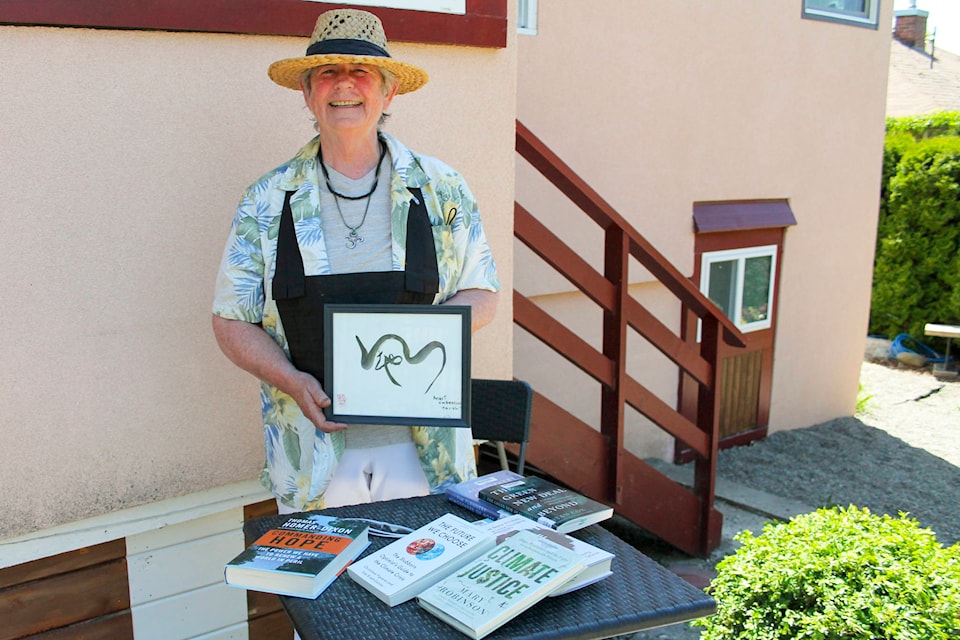By Kuya Minogue, resident teacher at Sakura-ji, Creston’s zendo
It’s been years since I wrote a column for our local rag. The last set of columns actually got published as a book, “Mountains and River Sutras”. Since then, I’ve been taking a break. Now, with this column, I’m back for a new conversation.
These pandemic times have really up-scaled awareness of the trouble that our world is in. We “knew” back then, but now our view is wider, and we are super-aware of huge, related problems like economic decline, injustice, climate change impacts, and rising violence. Awareness of our world’s situation is close to unavoidable.
But wait! Don’t burn this column in your fire pit. I promise not to rant about the world-wide disasters we are witnessing. Instead, I want to tell you about the Active Hope work of Joanna Macy, and invite you into some suggested practices, similar to the suggestions in the Zen’s Eye View column I previously wrote for the Advance. These are busy times, but if you build some of the suggested practices into your day, I sincerely expect they will give you a lift, and in a meaningful way.
The best way to describe active hope is to write about my new lawn. I’ve always considered lawns a waste of space that could be used for food or pollinator gardens. Hence, ever since moving to Creston I have tended an in-town veggie garden full of flowers. But I turned 75 this year, and taking care of low-lying garden beds is getting more difficult for my knees, back, and hips. So, I raised hope for a lawn that tempts me to the yoga/qigong practices that lubricate those creaking joints, and hired a landscaper to create a 12 x 20 lawn, private from the street and shaded in the late afternoon and early evening.
We spread soil from two 16 X 4 foot raised garden beds and added and spread another half-load of topsoil. Added seeds and water. And then two weeks later — Ta-daa! — tiny grass sprouts struggling to find their way through uncountable sturdy sunflower starts, a myriad of chickweed tangles, quadrillion dandelions, and the cutest spraying of cilantro babies.
‘Oh!’ I thought, ‘I’ll grow a sunflower forest, and then take the sunflowers out before they go to seed in the fall. It’ll be good for the bees.’
When I shared these thoughts with the landscaper, he was horrified. He stood above a four-inch sunflower plant and stretched his left hand out as if holding the stalk of a plant in full bloom. “Do you know how big these roots are, and the damage they will do?” He shook his head and walked away muttering, “You may as well have kept the gardens.”
I decided to weed — on hands and knees of course, because the lawn is organic. At first, the job seemed impossible, and I approached it with a sinking feeling in my gut. The feeling was tiny compared to, but similar in tone to, the sinking feeling I get when I consider my concerns for the future.
It was during this time that I learned about Joanna Macy’s teachings on active hope. “Hope,” she says, “is not wishful thinking or a state of mind. Hope is each tiny action that uplifts.” With this view, pulling tiny chickweed sprouts became a conscious act-of-hope that turned an onerous weeding task into an empowering, uplifting and encouraging activity. I had hoped for an old-fashioned lawn to roll around on. I identified my part in bringing that hope to fruition, and then weeded every morning for two weeks.
Last evening, I did qigong on that shaded lawn. It was wonderful to enjoy the realization of my hope. I love that lawn; I truly do. I’m so grateful to the landscaper for calming my wild mind with good feedback, to my knee pads, and to Home Hardware for stocking an old-fashioned push mower. They have all helped turn my backyard into a home gym.
Suggested Practice: Take time to notice and name what you love, and then evoke gratitude for whatever or whoever helped create what you noticed and named. Try this several times a day for two weeks.
READ MORE: A Zen’s-Eye View: The connection between Zen and Buddhism
